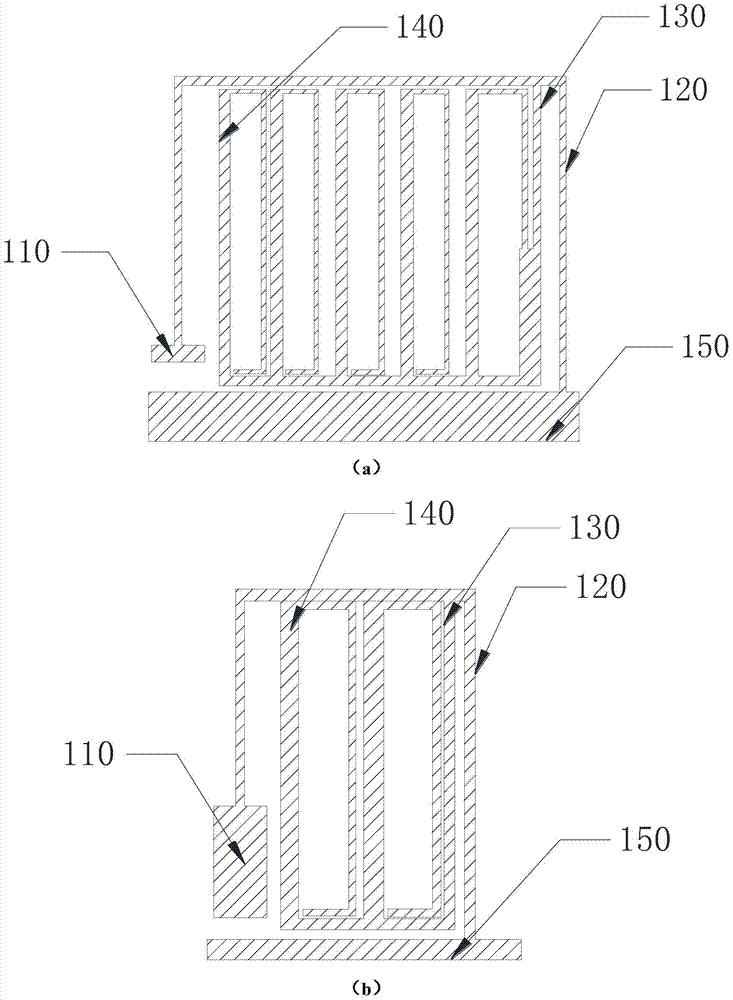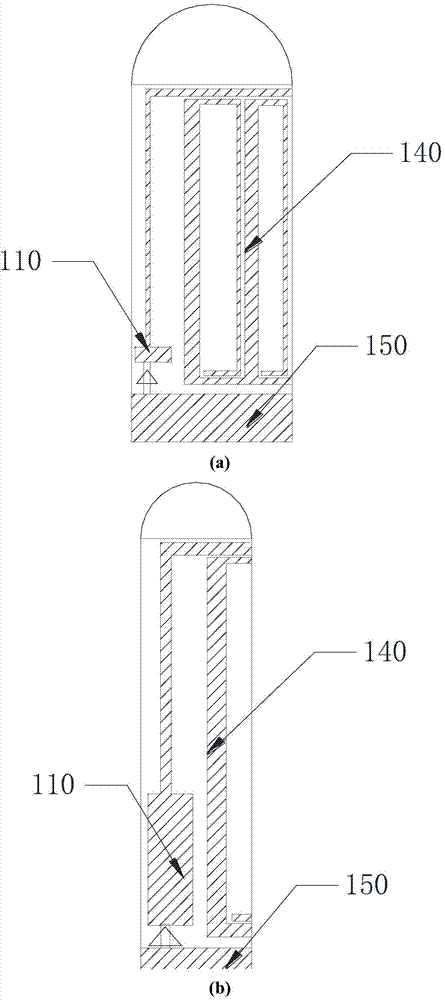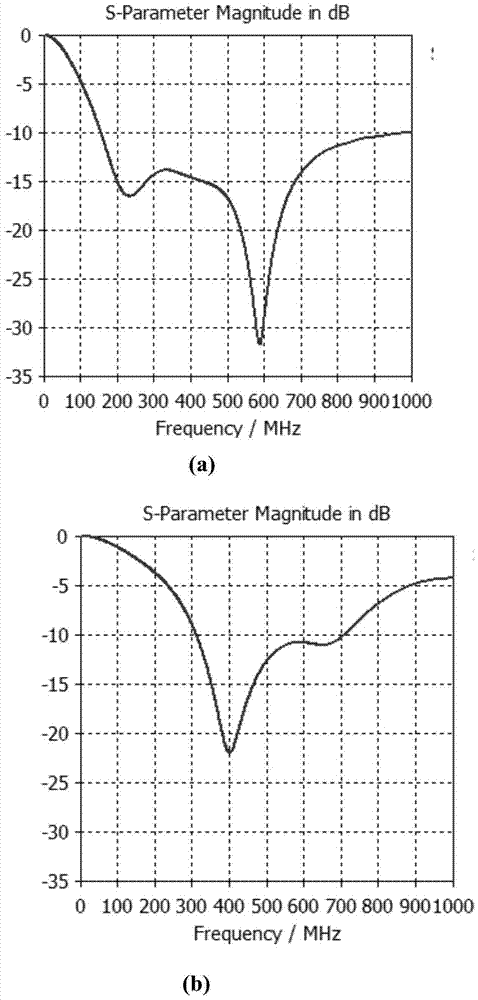Dual-frequency microstrip antenna of wireless capsule endoscope
A capsule endoscope and microstrip antenna technology, which is applied to antennas, antenna supports/installation devices, and devices that enable the antennas to work in different frequency bands at the same time, can solve the problem of occupying capsule space, short battery maintenance time, and high communication frequency. problem, to achieve the effect of reducing space, reducing capsule size, and increasing frequency bandwidth
- Summary
- Abstract
- Description
- Claims
- Application Information
AI Technical Summary
Problems solved by technology
Method used
Image
Examples
Embodiment 1~2
[0043] Embodiments 1-2 are applied to the dual-frequency microstrip antenna of the wireless capsule endoscope
[0044] Such as figure 1 As shown in (a), the dual-frequency microstrip antenna applied to the wireless capsule endoscope is an antenna attached to the outer wall of the capsule of the wireless capsule endoscope, and can be applied to a general wireless capsule endoscope. Designed on a substrate with a length of 33mm and a width of 23mm, the dielectric constant of the substrate is 3.7, the thickness of the copper foil is 0.035mm, and the figure 1 The antenna shown in (a) is placed in a phantom body with a dielectric constant of 56 and a conductivity of 0.8 S / m. In order to reduce the space occupied in the capsule shell, the invented antenna is pasted on the outer wall of the capsule shell to obtain the antenna in the final use state (such as figure 2 (a) shown). The inventive antenna requires a capsule shell radius of 5.3 mm, respectively.
[0045] In order to fu...
PUM
 Login to View More
Login to View More Abstract
Description
Claims
Application Information
 Login to View More
Login to View More - R&D
- Intellectual Property
- Life Sciences
- Materials
- Tech Scout
- Unparalleled Data Quality
- Higher Quality Content
- 60% Fewer Hallucinations
Browse by: Latest US Patents, China's latest patents, Technical Efficacy Thesaurus, Application Domain, Technology Topic, Popular Technical Reports.
© 2025 PatSnap. All rights reserved.Legal|Privacy policy|Modern Slavery Act Transparency Statement|Sitemap|About US| Contact US: help@patsnap.com



